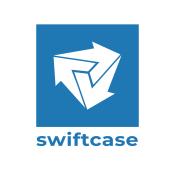Invoices, statements, reports, quotes and receipts, your business needs
to communicate specific and accurate information with clients and staff
and make sure that everything is watertight from a legal and business
perspective. You want to make sure there is no confusion at all when it
comes to what services you are providing, and the relevant agreements
involved.
To create effective, relevant documents, there are four primary factors
you have to consider:
Audience
Who is going to be receiving and reading the document? Are they familiar
with your industry and its technicalities? Alternatively, are they
outsiders whom you need to take through these details in a clear and
direct manner? It is essential to get the tone or “voice” of the
document just right.
Professional documents will need to be written formally and may require
specific stipulations laid out in a precise manner. If you are writing
to persuade potential new customers, then the tone can be more relaxed
and friendly. It is good to have a look at other examples of the same
document by other companies in your field to get an indication of what
works best.
A good test is to read your text aloud and see if the tone is fit for
purpose. If it sounds stilted or doesn’t get to the point, you will hear
that, and be able to make the necessary changes.
Format
Depending on what you are trying to achieve, the type of document you
are creating can vary widely. Accounting documentation has its
conventions, with set formats for invoices, statements and reminders,
respectively.
Things are less set in stone when you are looking to create a report or
proposal. You will have to carefully consider what it is that the reader
is looking for, and what benefits you regarding conveying that
information. For example, if you are creating a report for potential
investors, you want to bring figures for productivity and profitability
to the fore. Often, people will have a set idea of what information they
need beforehand, and it is your job to make it as easy as possible for
them to find it.
Layout
By designing your document with ease-of reading in mind, you can engage
the recipient more effectively. Break up different sections with
distinct start and end points. Include headings, an index, page breaks
and white-space to keep the reader’s eye moving.
You should avoid huge, unwieldy walls of text at all costs. If the
reader cannot scan through and find what they need quickly, then you may
have lost their interest, or have to waste time explaining details at a
later point.
Graphics such as charts and illustrations can be useful, but think avoid
including too many unnecessarily. You may have a limited amount of page
space, and graphics that don’t serve a definite purpose will eat that
up. As with the text, think about what you are trying to communicate.
Style
It is tempting to base the visual style of your document of personal
preferences, but it is better overall to research what is expected as an
industry standard and conform to that. The feel of the document should
reflect its purpose, and a consistent look should hold up throughout.
You can achieve this by sticking to one or two fonts and two or three
colours. Too many variations will create a disjointed, jumbled style.
The visual style should complement your layout, and appeal to your
target audience. Once you have completed the document, spend some time
to look over it and see if it does work as a whole, in conveying the
message you need it to.
Automatic Generation
The alternative is to use software that automatically generates the
documents you need, based on criteria previously entered into the
system. Automation has the advantage of a consistent look and layout
every time and avoids the need to input the same information over and
over again.
If you are interested in automatically creating attractive, clear
business documents that convey a clear message, SwiftCase can help. Ask
for a demonstration of our powerful business process management
platform, today.
